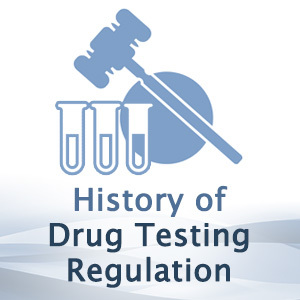
Incredibly, 84% of private employers perform pre-employment drug testing on all new hires in 2006, but it hasn’t always been this way. Prior to the 1980’s, private businesses had very little interest in workplace drug tests. The Federal Government only got interested in such drug testing in the late 1970’s following the discovery of drug use by military members returning from the Vietnam War. But substance abuse testing at work can be traced to the early 1900’s.
Henry Ford’s Social Department
Henry Ford is well-known for revolutionizing the car and assembly line, but he was also an early proponent of “sober and moral” workforces. In the early days of the Ford Motor Company, Ford developed a “Social Department” tasked with monitoring their employees’ lifestyles and how it might impact their job performance. Atop Ford’s priority list was drinking and gambling. Employees who engaged in such behavior would be illegible for certain company benefits and promotion.
Although Ford was on the right track to understand that certain behaviors outside the workplace will impact the work productivity, his approach was deemed too intrusive. His demand for employees to live a moral life went beyond the requirements of his employees’ job functions. Even though his intention was to improve the health and well-being of his employees’ health, the program was considered too paternalistic and was soon abandoned.
Military Drug Abuse
Outside of alcohol and tobacco addictions, early reports of drug abuse in the US military started soon after the Civil War; the first major use of morphine in the battlefield. The Union army itself issued 10 million opium pills to many of their wounded men. This widespread use lead to widespread abuse among veterans who referred to the addiction as “the army disease”.
Less than 100 years later, the US military once again caught in substance dependency during the Vietnam War. Many soldiers reported widespread use of marijuana and heroin to cope with the stresses of conflict. For many of these soldiers, the addiction continued back home and lasted throughout their later military careers.
USS Nimitz Accident
In 1981, an accident aboard the USS Nimitz killed 14 soldiers, injured 48, and caused property damage estimated at $150 million. The following autopsy found six of the dead tested positive for marijuana. This grave accident caused a firestorm within the Department of Defense, leading to several new regulations and policies regarding drug testing and penalties of drug use.
Even up to 1985, a survey showed that 8.9% of service members had still used illegal drugs within the last 30 days. In tackling the growing epidemic within the department, a foundation started to be laid for other departments and industries to institute workplace drug testing.
Executive Order 12564 – Drug-free Federal Workplace
Seeing the importance of drug testing within the military and growing drug abuse within the nation, Reagan instituted an executive order mandating that all federal agencies implement a drug testing policy for their employees. This executive order would be the inspiration for later private employer drug testing.
To support Reagan’s policy on a drug free workplace, Congress soon passed the Drug-Free Workplace Act of 1988 and the Anti-Drug Abuse Act of 1988. Both pieces of legislation created a framework to expand drug testing to Federal contractors and others policies to reduce the amount of drug use at the workplace.
Soon afterwards, the Department of Transportation passed the Omnibus Transportation Employee Testing Act of 1991 initiating drug testing as a requirement for all DOT truck drivers.
New York Code Rule 60 & 59
As employers realize the benefits of workplace drug testing and the results of increased productivity and decreased injuries, New York State implement a series of Code Rules to provide a direct monetary incentive for business to have a drug free workplace policy. Most of these incentives fall under Code Rule 60 and 59.
Code Rule 60 now provide New York business with a direct reduction to their workers’ compensation rates as long as they submit a certified employee drug testing program. Reductions can range from 2%-10%. Private employers are only now learning that the same drug testing policies they’ve implemented in the past can now result in a direct reduction in workers’ comp costs.
Workplace Drug Testing Benefits
Overall, workplace drug testing has provided incredible savings of money, health, and lives over the last 25 years. Employers who started drug testing first benefited with a safer workforce, but can now realize actual reductions on their bills.
